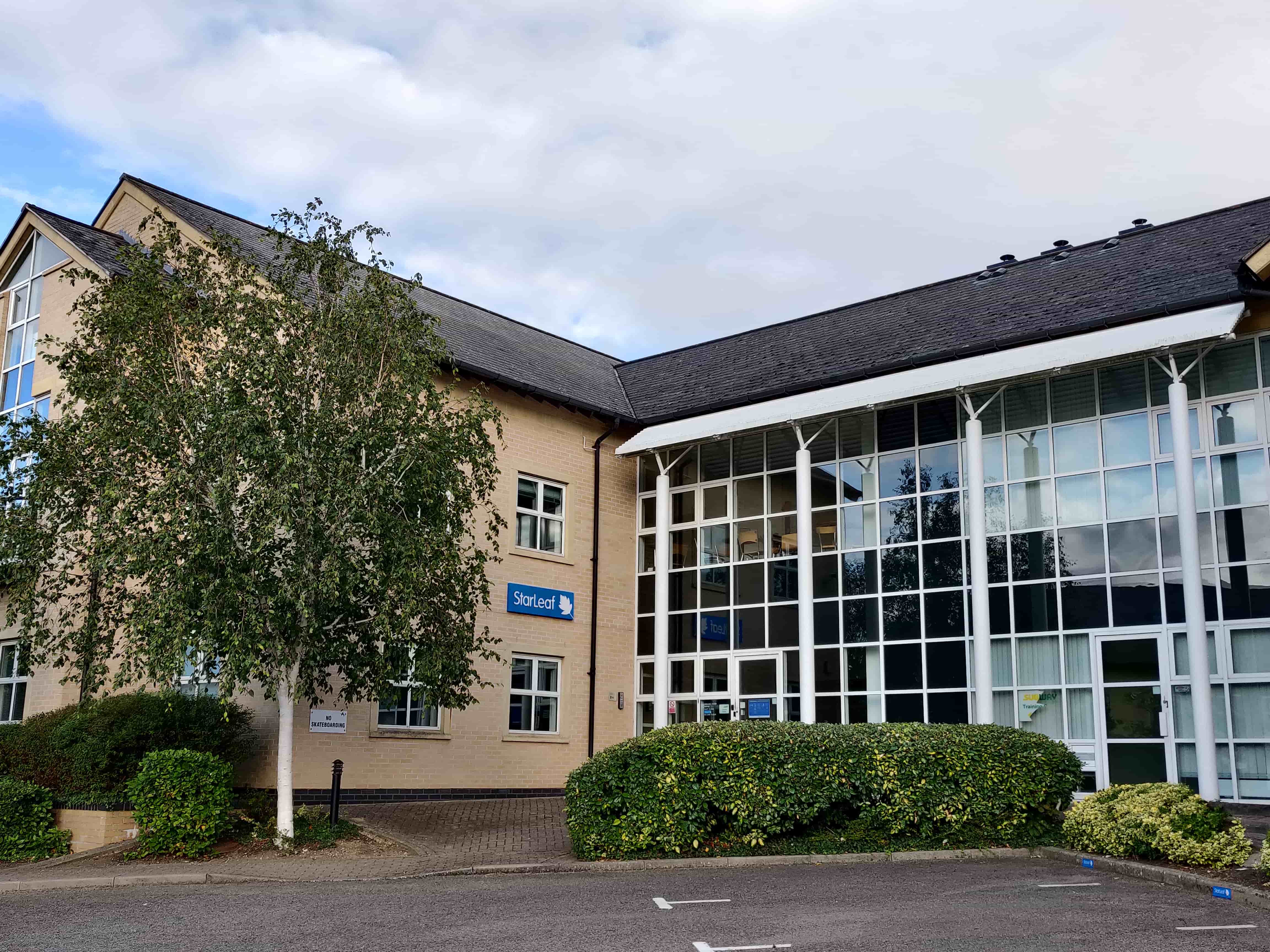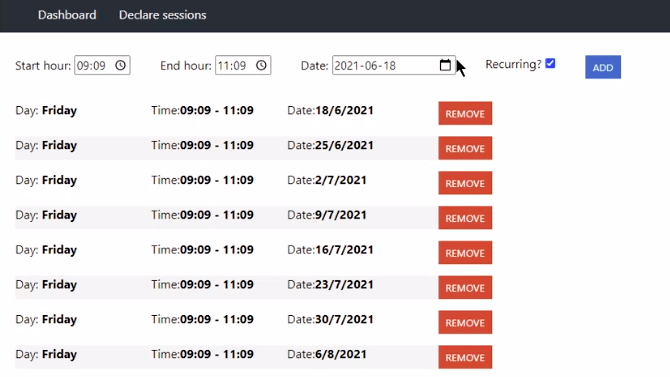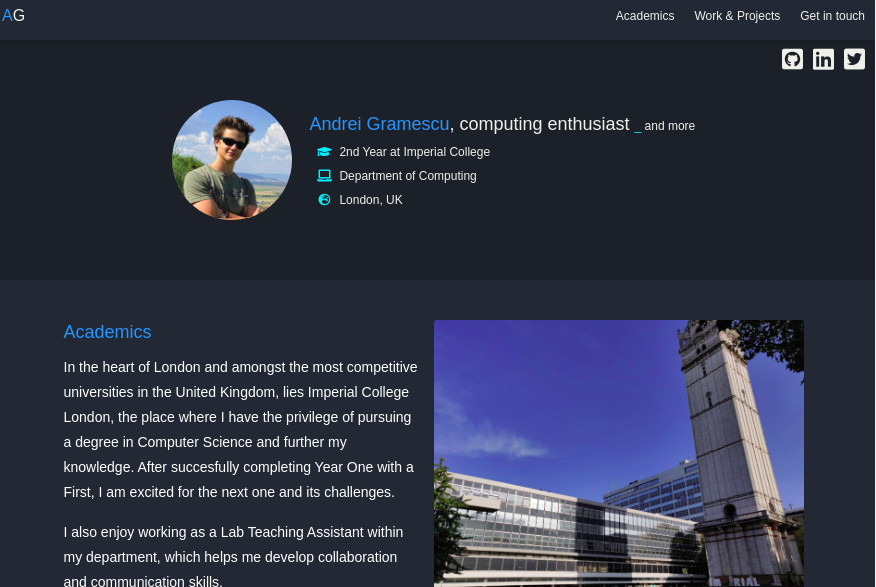
Andrei Gramescu, computing enthusiast
- 3nd Year at Imperial College
- Department of Computing
- London, UK
Academics
My profesional journey starts in South Kensington, at Imperial College. This is the place where I have the privilege of pursuing a Masters in Computer Science and am now in the penultimate year of my degree. Studying here placed me in a highly demanding environment, where my discipline and resilience are tested to their limits, and where I never stop learning from a network of skilled peers. I have finished both years with solid firsts and will undoubtedly continue studying hard in the next years to come, as my passion for what I do continues to grow.

I also enjoy working as a Lab Teaching Assistant and a Personal Programming Tutor within my department. Both involve helping younger students with the programming module and the weekly coursework. The former is conducted during lab sessions and is usually concerned with shorter questions. The latter involves marking weekly coursework and committing to performing one hour a week of teaching to a dedicated group of 8 first years. Both jobs allow me to fine tune my communication skills and constantly train the way I explain code to other people, especially newcomers.
With very few exceptions, I can confidently say that I've enjoyed all the modules so far. I've experienced the benefits that breadth of knowledge gave me both during university projects and the summer internship. Having said that, there are still some module that I found especially appealing in both years of study:
- Computing Practical (Haskell, Java and C)
- Discrete Mathematics
- Databases
- Computer Architecture
- Logic
- Operating Systems
- Computational Techniques
- Algorithm Design and Analysis
- Software Engineering Design
- Networks and Communications
StarLeaf internship

Mac ProblemReporter
Application-Wide Testing Framework
Scala
WACC Compiler
University coursework
WACC is a programming language for which we had to write a full compiler (with target ARM11) as part of the Second Year second term group project. The first two tasks involved writing a robust front-end (featuring parsing and semantic analysis as well as producing useful and expressive error messages) and a back-end for assembly generation that could also handle IO operations, stack / heap allocation and WACC runtime errors. The last task of the project was to extend the fairly limited language (unexpandable set of types, capable of only primitives, pairs and arrays, no garbage collection or support for functional programming patterns, to name a few) and add our own spin to it. My team and I settled on higher-order functions, lambda syntax , match statements and custom typing: the Unit type (semantics very similar to Haskell's Void), aliases, sum types, function types and recursive types.
C
The Pintos Operating System
University coursework
An operating system built as part of the Second Year first term group project, touching on many advanced concepts. We implemented a scheduling system for Pintos using two methods: priority donations and a multi level feedback queue. The Userprog task required implementing the process arg and stack setup, a good deal of system calls, including wait and exec , pagefaults and pointer management. Finally, implementing virtual memory involved paging, lazy loading, moving to swap, an efficient eviction algorithm, and solving an uncountable amount of deadlocks, memory leaks and race conditions.
GoForth
Personal project
A Forth interpreter and runtime environment built in collaboration with Liam. Forth is a fun, stack-oriented language used in embedded systems.
Mandelbrot Set Renderer
University coursework
A Mandelbrot Set Renderer that enables the user to zoom in its infinite complexity. The calculations are done on the GPU using the OpenGL API. See video.
ARM11 Assembler and Emulator
University coursework
As part of the 3rd Term coursework, we made an emulator supporting a subset of an ARM11 processor’s instructions as well as an assembler for the same computer architecture.
Web development
and design
In the past, I've built both:

Clean, elegant and fast Front-ends
that are responsive, easy to use and navigate and as accessible as possible to everyone on the web

Robust, restful APIs and Back-ends
with authentication, authorization, file-uploads, sending emails and CRUD operations with databases
The last web project that I worked on was part of a university module: designing for real people. This team project was heavily focused on our ability to interact with potential users of our app. I got to practice the way I approach the entire process of building a web service: understanding the problem, prototyping with meaningful mockups, user stories, thin slicing and applying useful metrics.
Contact
name


